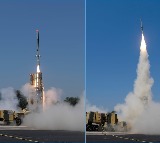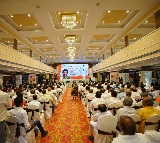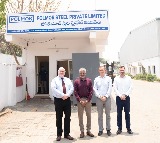Japan prepares itself for 30 metre high tsunami in future
Tokyo, Nov 18: Japan expects a gigantic 30-metre tsunami wave to lash the country's southern coast in the next few decades, the media reported on Friday. With the memory of the 2011 Fukushima tragedy still fresh, the archipelago is racing against time to build special towers and routes for evacuation, seawalls and shelters, Efe news reported. Less than a km from the Nankoku coast in Kochi prefecture, work is on to erect one of the 90 evacuation towers that have already been built in the region. Flanked by a floating capsule -- to aid escape in case of a tsunami -- the two-storey building, around 20-metre high, can house 362 people. "An evacuation site is essential in this area, because there are no mountains, elevated places or buildings where locals can seek protection," explains Manabu Nomura, head of Nankoku city council's risk management department. A bell to warn residents of an approaching threat crowns the building; next to it sits a stock of bedsheets, diapers, milk powder for babies, water and food. A foundation 14.5 metres deep -- equivalent to that of a five-storey building -- supports the structure, although some towers have one up to 39 metres deep, considering the main objective is stability in the face of a giant tsunami. Following the magnitude nine earthquake that shook Japan's northeast coast in 2011 and triggered tsunami waves of over 15 metres, the Japanese government revised estimates and forecast damages if an earthquake were to hit Nankai. According to the study, there is a 70 per cent chance of a quake between eight and nine on the Richter Scale originating in Nankai within the next 30 years, which could kill 323,000 people, completely destroy over two million houses and cause economic losses amounting to double the annual national budget. Kochi prefecture, home to some 720,000 people, and which would be one of the worst-affected in such an event, has now become a benchmark in Japan's efforts towards disaster-preparedness with 10 per cent of its annual budget devoted to it. "What makes the difference is whether one is or isn't prepared for disaster," remarks Kochi Governor Masanao Ozaki. Regional authorities are investing over 44 billion yen ($395 million) yearly into tsunami and earthquake preparedness, double the amount it was spending before the 2011 catastrophe. Authorities are particularly concerned about the lack of awareness among local people in the face of such an event. In the 2011 tragedy that claimed 20,000 lives and displaced 470,000 in northeast Japan, Normura said many of the victims did not believe they were in danger and thus did not evacuate. Earthquakes are relatively common in Japan, which sits on the Ring of Fire, one of the world's most seismically-active regions.



















